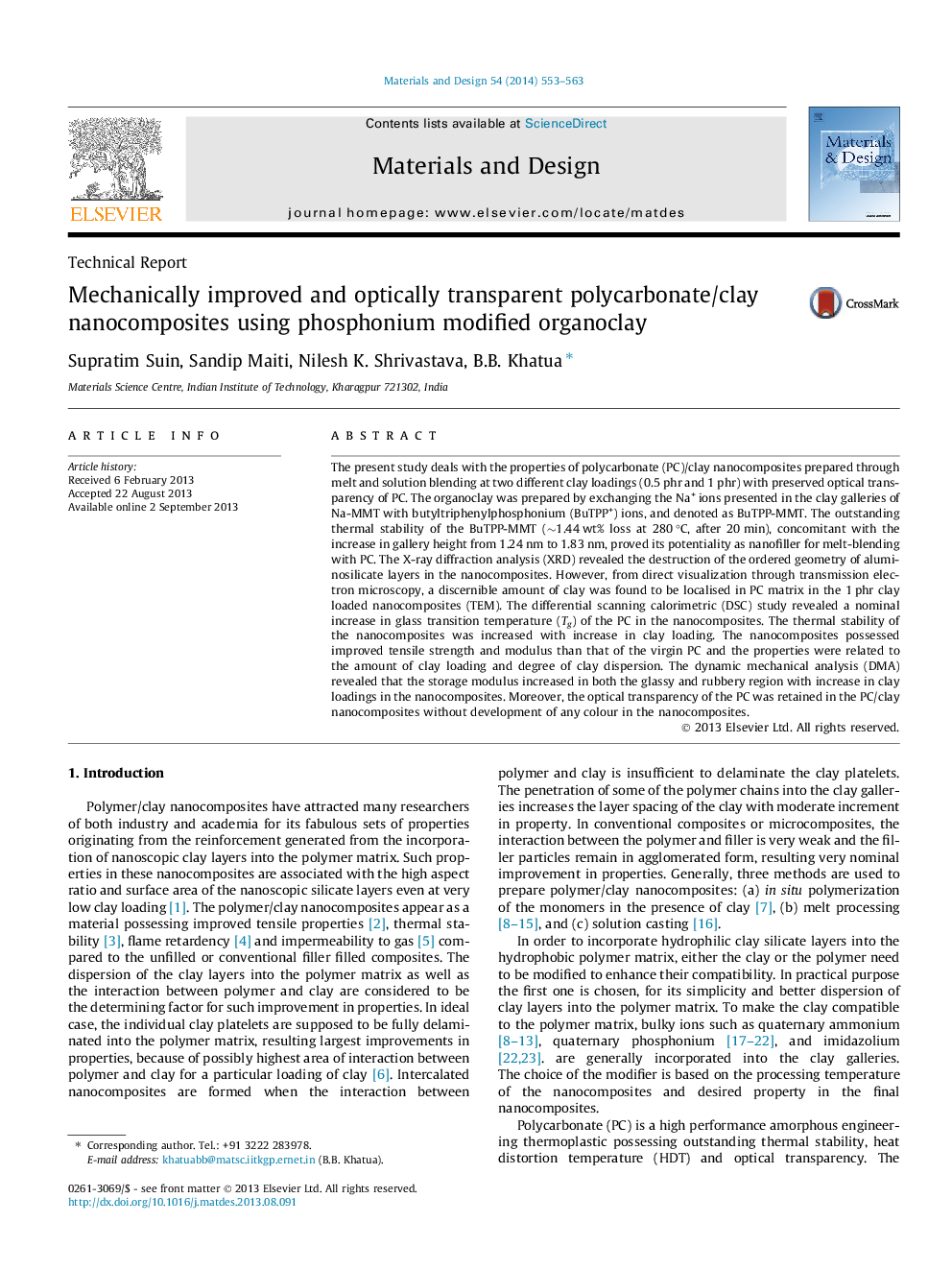| کد مقاله | کد نشریه | سال انتشار | مقاله انگلیسی | نسخه تمام متن |
|---|---|---|---|---|
| 829673 | 1470343 | 2014 | 11 صفحه PDF | دانلود رایگان |
• Highly stable phosphonium modified organoclay was prepared through ion exchange reaction.
• The organoclay was melt mixed and solution mixed with polycarbonate (PC).
• Highly exfoliated morphology of the clay was obtained in the nanocomposites.
• Mechanical properties of PC were significantly improved at very low loading.
• The optical transparency of PC was retained without generation of any colour.
The present study deals with the properties of polycarbonate (PC)/clay nanocomposites prepared through melt and solution blending at two different clay loadings (0.5 phr and 1 phr) with preserved optical transparency of PC. The organoclay was prepared by exchanging the Na+ ions presented in the clay galleries of Na-MMT with butyltriphenylphosphonium (BuTPP+) ions, and denoted as BuTPP-MMT. The outstanding thermal stability of the BuTPP-MMT (∼1.44 wt% loss at 280 °C, after 20 min), concomitant with the increase in gallery height from 1.24 nm to 1.83 nm, proved its potentiality as nanofiller for melt-blending with PC. The X-ray diffraction analysis (XRD) revealed the destruction of the ordered geometry of aluminosilicate layers in the nanocomposites. However, from direct visualization through transmission electron microscopy, a discernible amount of clay was found to be localised in PC matrix in the 1 phr clay loaded nanocomposites (TEM). The differential scanning calorimetric (DSC) study revealed a nominal increase in glass transition temperature (Tg) of the PC in the nanocomposites. The thermal stability of the nanocomposites was increased with increase in clay loading. The nanocomposites possessed improved tensile strength and modulus than that of the virgin PC and the properties were related to the amount of clay loading and degree of clay dispersion. The dynamic mechanical analysis (DMA) revealed that the storage modulus increased in both the glassy and rubbery region with increase in clay loadings in the nanocomposites. Moreover, the optical transparency of the PC was retained in the PC/clay nanocomposites without development of any colour in the nanocomposites.
Figure optionsDownload as PowerPoint slide
Journal: Materials & Design (1980-2015) - Volume 54, February 2014, Pages 553–563
